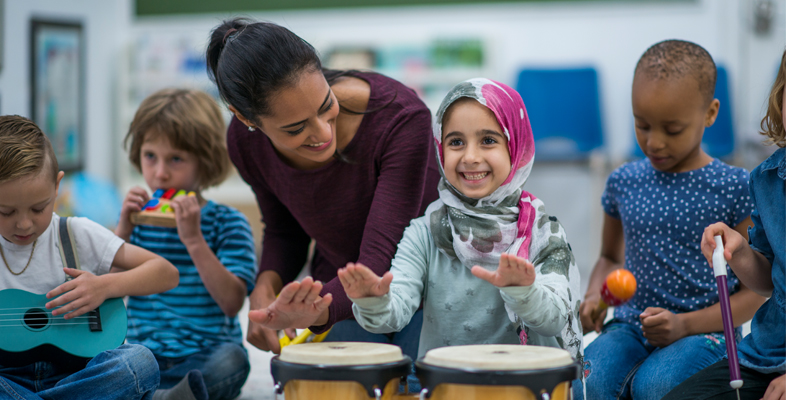1.1 Listening to multiple perspectives
The sociocultural thinker Barbara Rogoff (2003) maintains that any child makes an active contribution to the environment or social community of which they are a part. Adults learn from them as much as they learn from us. Therefore supporting children’s transitions should not only draw on other people’s perspectives it should also involve listening to the child themselves. The following case study highlights the importance of listening to multiple perspectives.
Box 1 Case study
Researcher Julie Medhurst investigated the experiences of twin boys Michael and Martin, aged 2 years 6 months, as they made the transition from the ‘Toddler’ room to the Nursery at their Children and Family Centre (Medhurst, 2014). She interviewed the boys’ mother, family worker and new nursery worker, and found that pre-transition visits to the nursery with the boys and their family worker, had been valuable opportunities to listen to their needs and interests, to build continuity and address concerns.
To extend their listening further the collective group also watched videos of the boys playing in both the ‘Toddler’ room and the nursery, reflecting on their body language, well-being and engagement. The boys’ mother noted that Martin took the lead in the new setting which was enabling for Michael; others in the group considered whether transitioning separately may have been more beneficial.
In this example listening to the different perspectives on the situation produced valuable information about the boys’ experiences that could inform their future transition. By engaging directly with the boys’ reactions to their environments, the group valued Michael and Martin as active contributors to their new context.
Summary points
- Bronfenbrenner’s ideas about ecological systems highlights the complexity of influences on young children’s daily experiences.
- Listening and responding to children as they prepare for, and experience transition, can help them to make meaning about change.
- Listening to multiple perspectives, including the child’s, and making connections between different situations can enable practitioners and families to support children’s smooth transition.
Activity 1 Personalising transitions
Read the following quotation from researchers Hilary Fabian and Aline-Wendy Dunlop who listened to children, families and practitioners to identify ways of supporting children’s transitions. Although they summarise the needs of children moving into formal school, their ideas are equally relevant for a child starting other settings such as a nursery or childminder.
For children to gain a positive view of school and feel confident they need:
- a good knowledge of the layout of the room and some knowledge of the setting building
- a knowledge of the practitioners and the way they think
- an understanding of the language and communication used in the setting
- an idea of the nature of the activities that take place
- strategies to make friends, and
- a sense of the setting culture.
The list is reproduced in the table below. For this activity think about a child you know well, and think about a transition they will make in the future. In the ‘strategies’ column of the table, record any ideas you have about how the child can be supported to have this positive view of their new setting, for example by meeting a new practitioner, and consider the opportunities for listening that the strategy provides.
On the right-hand-side of the table, record any potential barriers that might hinder the strategies you identified, these might be practical, or related to social, cultural or physical factors. One line of the table is completed with an example.
Alternatively you can reflect on a past transition that a child you know well experienced. In the table record the strategies that you noticed were in place and the barriers that were encountered.
| Needs | Strategies | Barriers |
|---|---|---|
| A good knowledge of the layout of the room and some knowledge of the setting building
| ||
| A knowledge of the practitioners and the way they think
| ||
| An understanding of the language and communication used in the setting | ||
| An idea of the nature of the activities that take place
| ||
| Strategies to make friends | Offering pre-visits to the setting can provide opportunities for children to meet new peers. A practitioner who listens to children’s interests can support children to make connections with like-minded peers.
| Not all children will be available to attend pre-visits and may be disadvantaged by the lack of socialisation opportunity.
|
| A sense of the setting culture. |
Discussion
A child can be supported to make meaning about their transition experiences through visits, and dialogue between the family and practitioners. Play experiences during visits should be in line with the usual activities on offer but also can be adapted to suit children’s individual interests. The individual child’s ways of communicating need to be clear to everyone not just through discussion but also through experiencing activities together. You probably had such ideas recorded in your list but remember supporting transition is not simply about preparatory visits or meetings. Listening to the child before and during transition is essential.
When adults listen to, and respond to a child, and those who know the child well, they can develop shared understandings about new settings. The aim of listening here is to create continuity for the child and a sense of connection as they move between environments. Additionally you will not know whether the physical strategies and arrangements that you have put in place have been successful unless you continue to listen to the child and their family.
